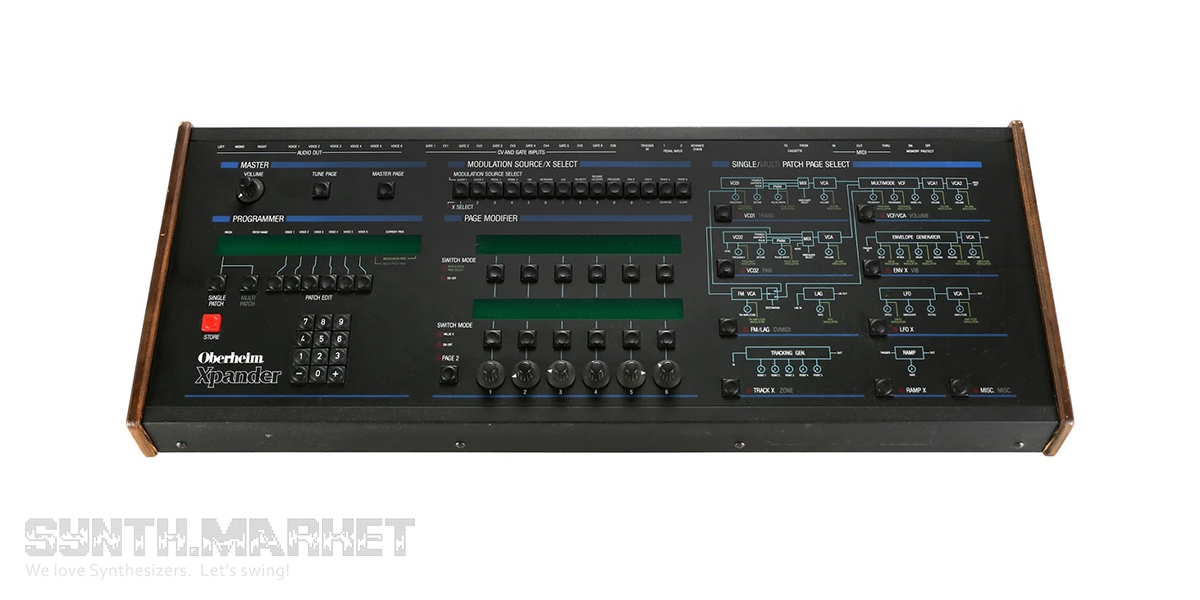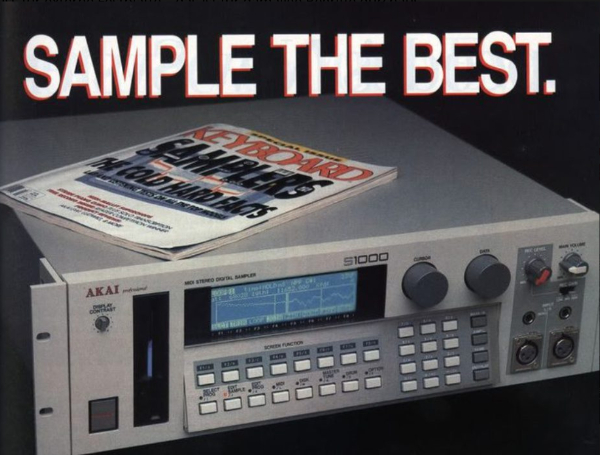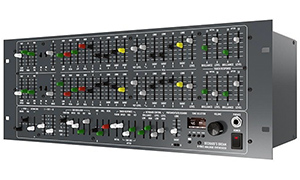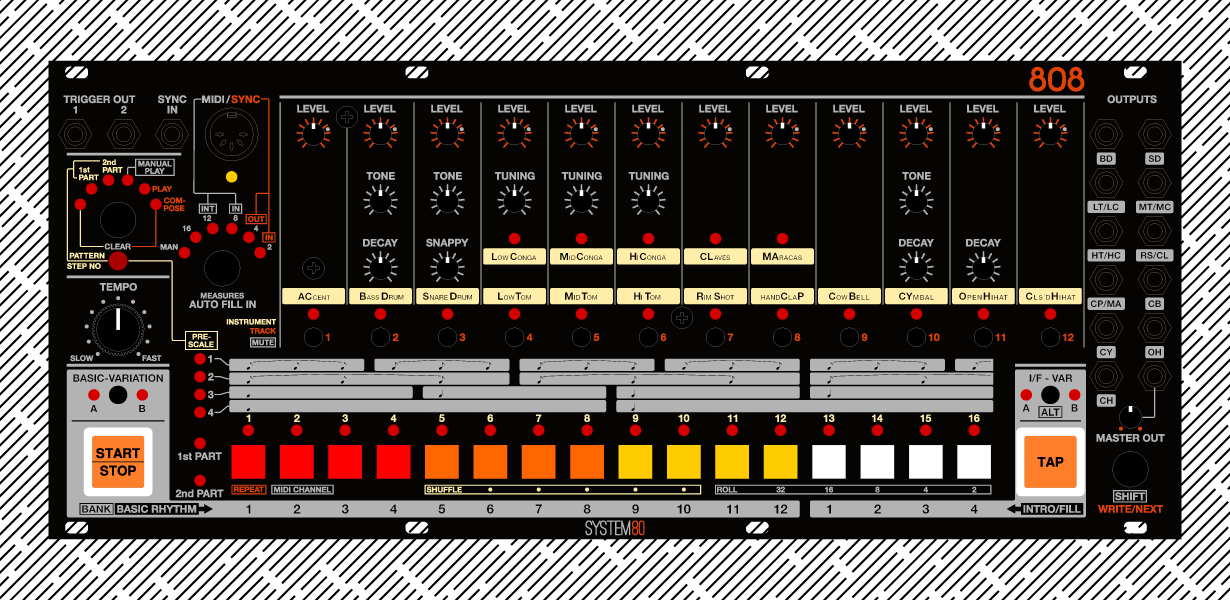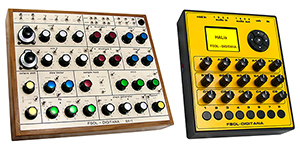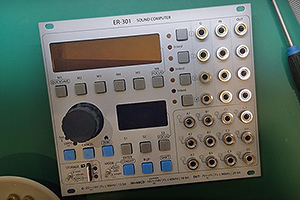In 1984 Oberheim tried to assemble a modular system in a relatively small housing with the ability to quickly and easily integrate with other devices. The result was Xpander which combines the flexibility of a modular system with the ease of controlling a digital synthesizer. The sound is produced by an analog circuit and, while the signal passes through all function blocks, it remains analog (it is not digitized, it does not pass through the ADC/DAC).
Six CEM3374 chips (one for each voice) are responsible for creating the primary sound wave they are represented by two independent VCOs combined in one housing. Each voltage controlled oscillator can produce a triangular, sawtooth or pulse wave. The sync mode, "detune" and frequency (FM) modulation of the two VCOs are available.
At the output of each voltage controlled oscillator there’s an independent VCA. Then the signal of two VCOs is mixed in VCF, after which the signal passes through two independent VCAs put in series.
The voltage controlled filter (VCF) can operate in four modes: low-pass, band-pass, notch and high-pass. In this case, the slope can be set to 6 (one filter stage/pole), 12 (two), 18 (three), 24 (four) dB per octave.
In addition, Xpander includes a number of separate digital function blocks that can be used to modulate any element of the system:
Envelope generators - each voice can have up to five ADSR envelope generators, and you can additionally set a value for the delay (the initial envelope stage). So the generators are presented by DADSR.
LFO - five independent low frequency oscillators producing a triangle, meander, saw, reverse saw and noise.
The Lag generator is a function generator similar to the traditional portamento. However, it can be routed not only to pitch, but also to control any audio signal.
Ramp generator - produces a control signal that increases linearly from zero to the specified value.
Settings can be saved in one of a hundred patches, and up to hundred multitimbral presets can be made out of patches.
Xpander has advanced MIDI support: each voice or group of voices can be assigned to a separate MIDI channel. There are also connectors for CV signal input/output, which provides integration of Xpander with modular systems.
Oberheim Xpander was used in the works of Cirrus, Josh Wink, Astral Projection, Vince Clarke, Mark Isham, Die Krupps, DJ Sasha, Chemical Brothers, Frontline Assembly, Front 242, Mitchell Froom, Gas Chamber Orchestra, Meat Beat Manifesto, Nine Inch Nails.
Tags: analog synthesizer







